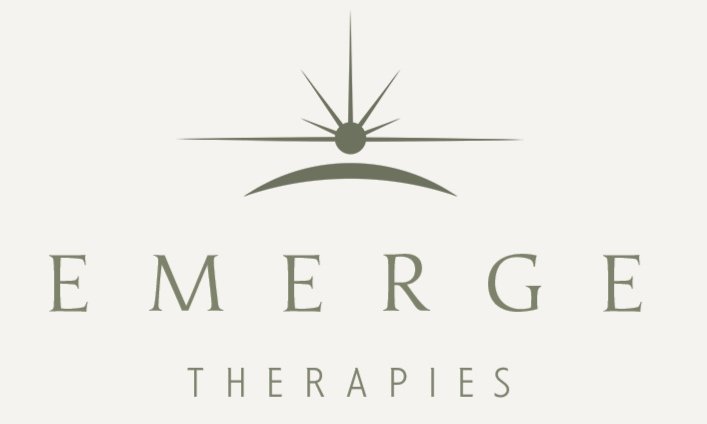
Get To Know Me
Why I’m a Counselor
There are many reasons why I chose to pursue a career as a professional counselor. First and foremost, I’m fascinated by the intricacies of the human mind and how our thoughts and emotions shape our behavior. I’m drawn to helping others and finding ways to support people through challenging times in their lives. As a counselor, I have the opportunity to work with people from all walks of life and help them overcome personal obstacles, improve their mental health, and live happier, more fulfilling lives.
There is a deep sense of fulfillment that comes from helping others. I believe that we are all interconnected, and that by helping others, we can create a positive ripple effect in the world. It is incredibly rewarding to witness the growth and progress of my clients, and to know that I have played a role in their journey towards healing and self-discovery.
My Experience
I received my Master of Arts in Clinical Mental Health Counseling from Houston Baptist University. As part of my educational program studies, I undertook an internship at McLean OCDI Houston, renowned for its expert team of multidisciplinary professionals specializing in the diagnosis and treatment of obsessive-compulsive disorder (OCD), anxiety disorders, phobias, and related disorders. I learned about the nuanced treatment of OCD, and the importance of providing compassionate, evidence-based mental health care.
I have also trained in Somatic Experiencing (SE), intermediate level, which is a body-centered psychotherapy model used to help treat trauma and other stress disorders.
My Approaches to Therapy
-
Acceptance and Commitment Therapy (ACT) is a type of psychotherapy that aims to help individuals develop psychological flexibility and move towards valued life directions. It is based on the idea that the attempt to avoid or control uncomfortable thoughts, feelings, and experiences ultimately leads to greater suffering and decreased well-being.
ACT encourages clients to accept their internal experiences (thoughts, feelings, sensations) and to commit to taking action in line with their values and goals. This involves cultivating mindfulness, identifying values, and taking committed action towards those values, even in the face of difficult thoughts and emotions.
In ACT, clients learn to develop a non-judgmental awareness of their thoughts and feelings, which can help them to become less reactive to them. Through this process, they can develop a greater sense of self-awareness and self-compassion, which can lead to greater psychological flexibility and resilience. Ultimately, ACT aims to help clients create a more meaningful and fulfilling life, even in the face of challenges and difficulties.
-
Cognitive Behavioral Therapy (CBT) is a type of psychotherapy that focuses on identifying and changing negative patterns of thought and behavior that contribute to emotional and psychological difficulties. It is based on the idea that our thoughts, feelings, and behaviors are interconnected and that changing any one of these can have a positive impact on the others.
In CBT, clients work with a therapist to identify negative or distorted thought patterns that may be contributing to their difficulties. These may include negative beliefs about oneself, the world, or the future. Once identified, the therapist helps the client to challenge these thoughts by looking for evidence that contradicts them and developing more realistic and adaptive thoughts.
CBT also involves behavioral interventions, such as setting and achieving goals, exposure therapy, and relaxation techniques, to help clients change negative patterns of behavior and develop new, healthier habits. Clients are encouraged to practice new skills and behaviors outside of therapy sessions to reinforce their learning and promote lasting change.
CBT has been shown to be effective in treating a wide range of psychological disorders, including depression, anxiety, post-traumatic stress disorder (PTSD), and eating disorders, among others. It is typically a short-term therapy, with most clients experiencing improvement within a few months of starting treatment.
-
Exposure and Response Prevention (ERP) therapy is a type of cognitive-behavioral therapy (CBT) that is often used to treat anxiety disorders, specifically obsessive-compulsive disorder (OCD). The goal of ERP is to help individuals confront their fears and anxiety-provoking situations, and to learn to resist the urge to engage in compulsive behaviors that may provide temporary relief but ultimately reinforce the anxiety.
In ERP therapy, the client is gradually exposed to the feared object or situation, while being prevented from engaging in their usual compulsive behaviors. For example, a person with OCD who has a fear of contamination may be asked to touch a doorknob, and then instructed to resist the urge to wash their hands. The therapist may gradually increase the exposure by having the client touch other objects or exposing them to more intense situations, such as being in a crowded public place.
Through repeated exposure to the feared object or situation, the client learns that the feared outcome does not occur, and the anxiety gradually decreases over time. By resisting the urge to engage in compulsive behaviors, the client also learns that they are capable of tolerating uncomfortable feelings and that the anxiety will eventually subside on its own.
ERP therapy typically requires a significant amount of effort and commitment from the client, and can be challenging and uncomfortable in the short-term. However, research has shown that it can be highly effective in reducing symptoms of OCD and other anxiety disorders.
-
Holistic therapy is an approach that considers the whole person - body, mind, and spirit - in the pursuit of optimal health and wellness. It emphasizes the interconnection of all aspects of a person's life, and recognizes that physical, emotional, and spiritual health are all intertwined.
Holistic therapy may incorporate a variety of treatment approaches, including traditional medicine, alternative therapies, and lifestyle changes. Examples of alternative therapies that may be used include acupuncture, massage therapy, herbal medicine, and meditation. Lifestyle changes may include dietary modifications, exercise, and stress reduction techniques.
The goal of holistic therapy is to promote healing and balance in all aspects of a person's life. It recognizes that an individual's physical symptoms may be linked to emotional or spiritual issues and seeks to address the root causes of illness or discomfort rather than simply treating the symptoms.
Holistic therapy is often used in conjunction with traditional medical treatments, as it can complement and enhance the effectiveness of these treatments. It is also used as a preventative approach to healthcare, as it encourages individuals to take an active role in maintaining their own health and well-being.
-
Mindfulness-Based Therapy (MBT) is a form of psychotherapy that incorporates mindfulness practices and techniques into the therapeutic process. It is based on the idea that becoming more mindful - that is, being more present and aware in the present moment - can help individuals to better manage their thoughts, emotions, and behaviors.
In MBT, clients are taught to practice mindfulness through various techniques, such as meditation, breathing exercises, and body scans. Through these practices, they learn to observe their thoughts and feelings without judgment, and to develop a greater sense of acceptance and compassion towards themselves and others.
MBT has been shown to be effective in treating a range of mental health issues, including depression, anxiety, and stress-related disorders. It can also be used to help individuals cope with physical health problems, such as chronic pain. MBT can help individuals develop a greater sense of self-awareness and emotional regulation and can improve their overall quality
-
Somatic Experiencing (SE) therapy is a form of body-centered psychotherapy that focuses on resolving symptoms of trauma and stress-related disorders. Developed by Dr. Peter Levine, SE therapy is based on the idea that trauma is not just a mental experience, but also a physical one, and that the body holds the key to healing.
In SE therapy, clients are encouraged to become more aware of their physical sensations and to notice any areas of tension or discomfort. The therapist may guide the client through specific exercises designed to help release and process these sensations, such as slow, rhythmic movements, or breathing exercises.
Through this process, clients are able to gradually re-engage with their physical sensations and regain a sense of safety and control over their bodies. As they begin to release pent-up tension and trauma, they may experience a range of physical and emotional sensations, such as shaking, trembling, or crying. These are normal and expected responses to the process of releasing stored trauma.
SE therapy has been shown to be effective in treating a range of trauma-related disorders, including post-traumatic stress disorder (PTSD), anxiety, depression, and chronic pain. It is often used in conjunction with other forms of therapy, such as cognitive-behavioral therapy (CBT), to provide a more comprehensive approach to treatment.
SE therapy can be a powerful tool for individuals who have experienced trauma or are struggling with stress-related disorders. By helping them to connect with their bodies and process traumatic experiences in a safe and supportive environment, SE therapy can help them to find greater healing and resilience in their lives.
MY PROFESSIONAL VALUES
EDUCATION:
M.A., Clinical Mental Health Counseling from Houston Baptist University
Licensed Professional Counselor Associate
Supervised by Jean Dixon LPC-S
Somatic Experiencing, Intermediate Level
PROFESSIONAL AFFILIATIONS
Member of the American Counseling Association
Member of the United States Association for Body Psychotherapy





